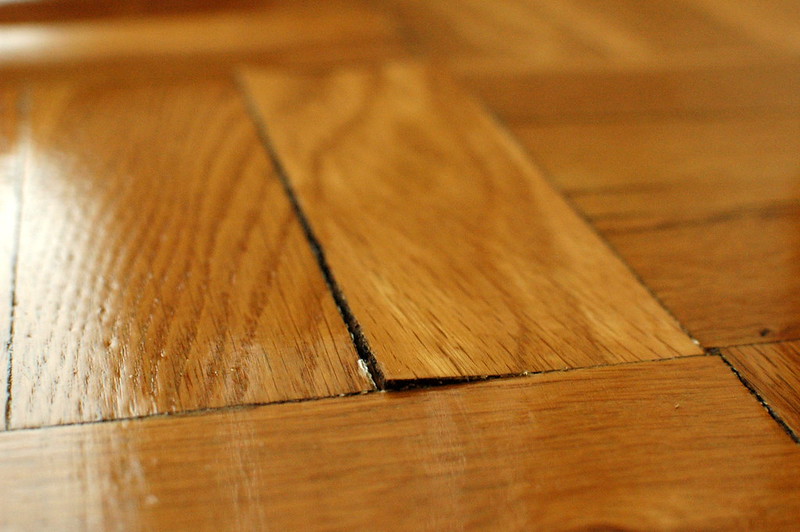Soft spots: They aren't charming, they feel unpleasant when you walk on them, and worse, they mess with the structural integrity of mobile homes. What are they really? Why do they form and how do you fix them?
Soft spots in your mobile home are places in the flooring where the subfloor has decayed due to continuous water leaks or moisture exposure over a long period. Expect them to occur in places that see a lot of liquid traffic, like your bathroom, kitchen, and underneath your windows.
They feel like literal soft spots on the floor; they’re squishy and sink whenever you step on that section of floor, often causing discoloration. This affects older mobile homes the most since they were built with particle board flooring.
The newer models, though, usually use sturdier plywood or oriented strand board (OSB). These materials are more resistant to water damage. But given enough time, water damage affects them all. So, why is that?
Why Do Mobile Homes Have Soft Spots?
Short answer: Water leaks.
That’s it. Water wets the subfloor material and causes it to break down. The breakdown is slow, but apparent in the weakening of the floor. Every time water gets in that spot, it gets worse, slowly but surely.
To make your mobile home floor last for you, you need to make sure it has as little damage as possible. This includes making sure it’s always dry. And note that wetness can come from above, below, or the side.
Above
From above, make sure your roof isn’t leaking. Try to fix it up if it does. It’ll stave off the need to fix the floor and save you money.
Too-powerful cooling systems are another source of moisture. The more powerful a system is, the faster it cools the air. When the air in your home is cooled down too quickly, the system does not have time to properly carry out dehumidification.
The humidity in the air then condenses into liquid, creating moisture on your floors and other surfaces. Use a less powerful AC and it will save you money on energy bills.
Below
Watch out for leaking pipework (bathroom and kitchen). Plumbing is one of the most common places for leaks to occur.
Side
The windows are the primary culprit for introducing wetness from the side. During rainfall, water runs down the wall to pool on the floor. If not mopped up quickly, this water will wreak its havoc and be gone by morning.
Also, check out areas where you know (or suspect) water or moisture gathers regularly. Places like around your pet’s water bowl, the flowerpot on the floor, or where you store your water in containers.

Now, if you already have soft spots on your floor, what can you do about it? Should you repair or replace the floor? Let’s find out.
How to Fix Soft Spots in Mobile Homes
You can either do it yourself or hire the services of professionals for assurance and quality. If you decide to do it yourself, figure out if you should:
- Cut out and replace the damaged section; or
- Cover the old floor completely with a new one
We recommend cutting out the damaged section and replacing it with a new one. Simply layering a new one over the old one might not let your doors open well; you get stiff doors that rub against the floor every time you try to use them. Not fun or cheap.
And they’re hell on the door hinges.
Steps to Fix Soft Spots
1. Remove the covering or finish
When replacing a damaged floor section, try not to do small repairs. Eventually, all the little repairs add up until your floor is more chunks than a whole. Rather, replace sections that span at least two joists. You’ll have to remove the floor covering first (carpet, tiles, linoleum, vinyl, or parquet).
- Carpet: Simply cut away the carpet. If it can be removed, do so.
- Tiles: You have to pull these up. It's a bit strenuous, so gear up and take your time.
- Linoleum or vinyl: Cut along the edges of the room. The covering will come out easily then.
- Parquet: Use a crowbar to pull out the baseboards, then use a tack lifter to remove the first few sections (to create space for a bigger tool). Upgrade to a crowbar when you feel the space is sufficient, and then an ice shovel.
2. Cut out the subfloor
Now that you've reached the subfloor, you’ll need to know its exact thickness and a circular saw set precisely to cut it out. This will help avoid damage to the joists. When cutting out the damaged subfloor, be careful to steer clear of plumbing and wires.
Cut out the subfloor in sections, sawing between joists to avoid damage to them. They're vital to the mobile home.
Measure and cut out as much new subfloor material as you need. Attach extra boards between the joists. This is what you’ll fasten your new subfloor to without putting too much stress on the joists.
3. Replace the finish
You get to use any covering you want. Have you ever wanted to switch to carpet? Here’s your chance. The tiles were too cold? Maybe you should use a parquet this time.
Are the Soft Spots Getting Out Of Control?
Do the soft spots seem to pop up every few days? Do you have to restore your floor quite regularly? Those are probably signs that your home is getting on in its years.
The U.S. Department of Housing and Urban Development (HUD) states modern mobile home average life expectancy is between 30 and 55 years. The better you take care of your house, the longer it lasts for you.
If your home has lasted that long, consider replacing it. You can make a gift of it by donating it to people who need it and upgrading to a brand new mobile home. We can help you help someone. You get benefits, too, one of which is a reduction in property taxes.
Banyan Mobile Home Removal will get your donation off your land and pair it with a family in need for free. No need to pay a dime to get it off your land, or look around for someone who requires it. That will be our job. All you have to do is call us at 855-545-8646 or email us today.


